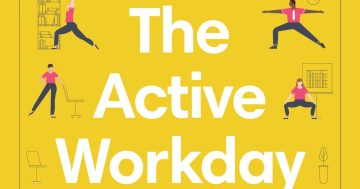Scott Mautz*looks at how to lead with empathy and still get results when employees are burnt out
 The need to lead with empathy has never been greater, as more and more employees struggle and feel overwhelmed at work.
The need to lead with empathy has never been greater, as more and more employees struggle and feel overwhelmed at work.
Empathetic leaders help employees and bring out their best, while also getting business results.
And as I discuss in my new course, How Leaders Can Connect Empathy and Results, being a human-centered leader and results-oriented leader are not at odds with one another.
In fact, being human-centered can be the key to getting to both your business and relational goals.
In this post, you’ll learn 3 strategies for leading with empathy, while still getting results.
Let’s get to it.
Leading with empathy requires a plan to listen with empathy
Here’s a PLAN (literally, an acronym) for empathetic listening.
Put yourself in their shoes.
Genuinely try to identify with the speakers’ feelings.
Before engaging, imagine your brain as a dry erase board, and take a wet sponge across it to wipe it free of distracting thoughts.
Laser focus on listening – as if nothing else in the world mattered.
You must believe that what the person is saying matters if you want to matter to them.
Acknowledge versus discount what’s said.
When we listen to someone’s frustrations or worries, we want to help – it’s human nature.
In attempting to do so, we often inadvertently use dismissive language like, “It’ll be OK,” or “Well, at least you…” or “It’s not as bad as you think.” Such language discounts the importance of what the other person is saying and feeling, and is often more about making yourself feel better.
Instead, say things like, “I see,” “Yes, of course”, “I hear you”, and “I can see why you feel that way.”
Non-verbals matter.
People will show their emotions before they’ll explain their feelings.
Pay attention to the speakers’ non-verbal cues as you can learn a lot from them.
Pay attention to your non-verbals, as well.
Mirror the speakers’ emotions and body language.
Address employee burnout with empathy
First, learn to spot the signals of employee burnout, which include low energy, disengagement, cynicism and complaining, decreased productivity and quality of work, anti-social behaviour, irritability, over-sensitivity, absenteeism, and lateness.
Once you spot the signs, it’s time to dig deeper and ask the right set of questions, what I call the “Burnout Breakdown”: four questions to discuss with the employee:
Is it too much work?
If so, discuss priorities, how to take non-essential work off the employee’s work plan, and any training they need to be more efficient in their work.
Is it the wrong work?
This leads to a discussion on whether or not the role is the right fit for the employee or a discussion on role clarity.
This means ensuring the employee understands what’s required of their role, and what isn’t (looking for things they took on outside their scope of responsibility).
Are you getting the wrong response to your work?
This uncovers if the employee feels underappreciated for their efforts, or if they’re running into unreasonable restraints, barriers, or toxicity in trying to get their work done.
You can help here by dialling up the appreciation and helping them overcome barriers.
Do you have unrealistic expectations of your work?
I encountered this frequently with high-achievers.
They’d adopted an “I can, and must, do everything” mentality.
This led to good discussions on setting realistic expectations and boundaries.
Set goals with empathy
Empathetic goals are ones that motivate employees because they’re based on something that truly matters to them.
To set meaningful goals, start by asking yourself
“What’s in it for them? How will this goal motivate them, connect with them emotionally, or help them to grow?”
Then follow the 4C’s of Empathetic Goalsetting.
Set goals that are: Common, Challenging, Compelling, and Cooperative.
Common so everyone is working towards the same end.
Challenging enough that it feels truly rewarding when it’s accomplished.
And challenging enough that it pushes people out of their comfort zone so they can grow, but not into a danger zone where they’ll feel overwhelmed.
Compelling enough that the goal generates energy on its own and inspires people to go above and beyond.
Meaningful enough that when people look back on accomplishing the goal, it’s memorable and still feels worthy of their hard work.
Cooperative in nature – lofty enough that everyone realizes the only way to achieve the goal is by everyone working together (versus in silos).
This also recognises that when we’re working together, we’re happiest.
You really can focus on the human and high-performance sides of the coin at the same time.
Take my course, How Leaders Can Connect Empathy and Results.
You’ll also create a LEAP (Leading with Empathy Action Plan), your customized plan for leading people, and results with empathy.
So, go forth with empathy, and excellence!
*Scott Mautz is author of Leading from the Middle, keynote speaker/trainer, ex-P&G senior exec., faculty Indiana Univ. Exec Ed., LinkedIn Learning Course Instructor, top Inc.com writer.
This article first appeared at linkedin.com.











